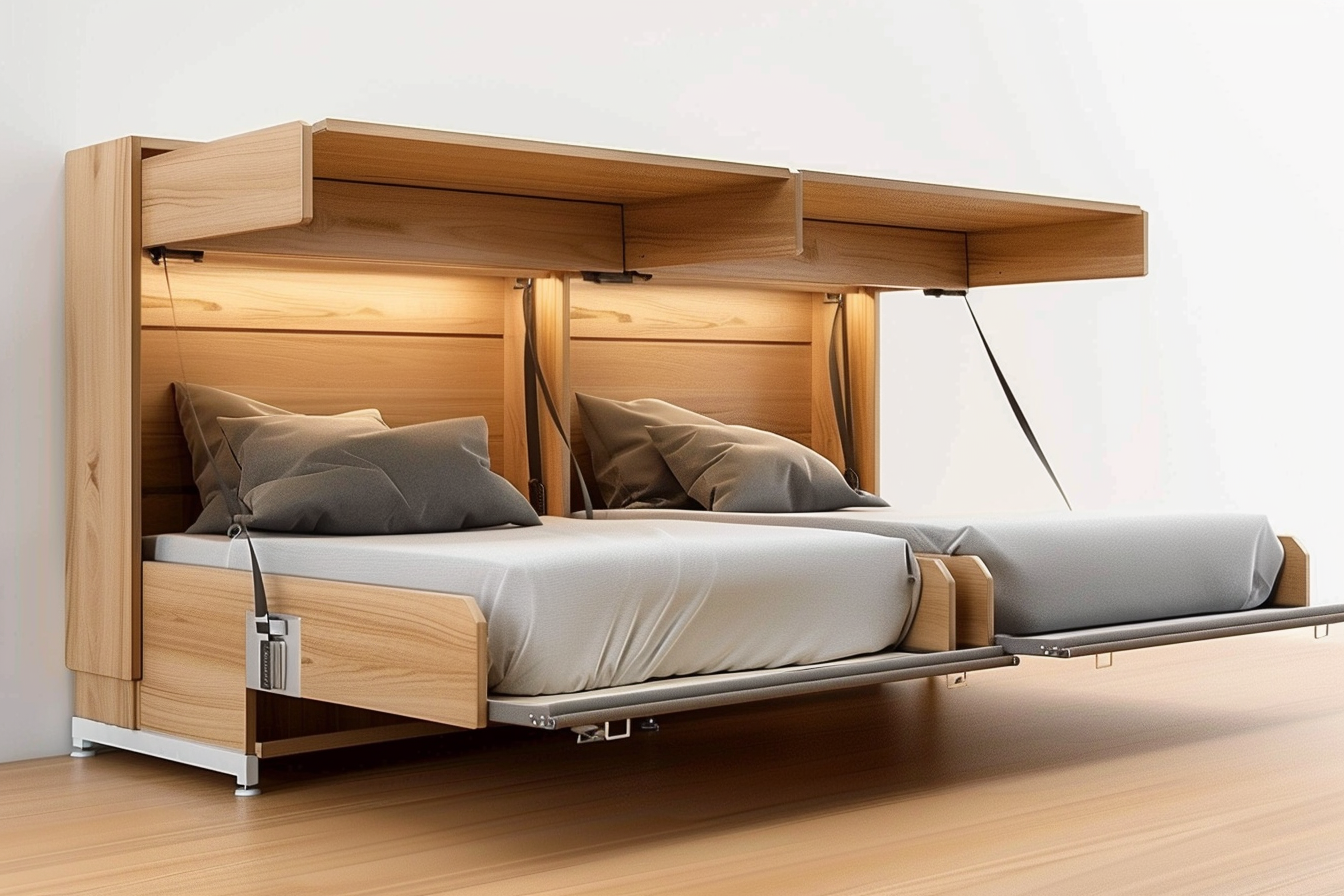Smart Folding Beds: Space-Saving Ideas for Modern Homes
Discover how folding beds can maximize living space without sacrificing comfort. This comprehensive guide explores compact bed types, key selection criteria, installation and maintenance tips, and cost comparisons to help apartment dwellers, hosts, and small-home owners choose the right space-saving bed solution.

Folding beds are a practical answer to the space constraints many people face in urban apartments and compact homes. These versatile pieces convert from compact storage into comfortable sleeping surfaces, helping you make the most of limited square footage while allowing rooms to serve multiple roles. Whether you need a guest solution, a convertible home office, or a multifunctional living area, folding beds deliver convenience and efficiency.
Maximizing small apartments with convertible furniture
In cities where every square foot counts, furniture that adapts is invaluable. Folding beds let you reclaim floor space during the day and create dedicated sleep zones at night. Studio layouts can retain separate living and sleeping functions, home offices can double as guest rooms, and living rooms can accommodate overnight visitors without permanent bedding taking up space. The visual and functional flexibility created by folding beds often makes compact homes feel larger and less cluttered.
What to look for when choosing a folding bed
Selecting the right folding bed requires attention to several important factors. Start with build quality: seek durable frames made from hardwood, steel, or quality engineered materials that can withstand frequent use. Smooth, reliable mechanisms—hinges, pistons, or gas springs—are essential for safe, effortless operation.
Mattress comfort matters as much as the frame. Many modern folding systems accept standard-size mattresses or come with purpose-built foam or hybrid mattresses designed to fold without degrading. Check weight capacity to ensure the bed supports intended users, and evaluate how easy the mechanism is to operate—especially if the bed will be used daily.
Storage needs and additional features should also influence your choice. Some models include integrated shelving, cabinets, built-in lighting, or a fold-down desk surface for true multi-functionality. Consider clearance requirements, mounting options, and whether the unit requires professional installation.
Using folding beds beyond the bedroom
The biggest advantage of folding beds is their ability to create multi-use spaces. A wall-mounted bed can free up living room space for daytime activities, while a cabinet or ottoman bed provides hidden sleeping space in a guest area. Rollaway beds are ideal for occasional use and can be stashed away when not needed. Sofa beds combine seating and sleeping in one piece of furniture, which is useful for living rooms and dens.
Multi-purpose furniture supports modern lifestyle trends—remote work, downsizing, and urban living—by making rooms more adaptable. Thoughtful placement can transform a small apartment into a more functional, welcoming home without major renovations.
Installation, care, and safety
Correct installation and regular maintenance extend the lifespan of a folding bed and ensure safe operation. Wall-mounted systems often need secure anchoring to studs or masonry and are commonly installed by professionals, though some designs are DIY-friendly with clear instructions. Horizontal cabinet beds, ottoman beds, and rollaways usually have fewer structural requirements but still benefit from proper setup.
Routine checks should include inspecting hinges, locking mechanisms, and any springs or pistons. Keep moving parts clean and free of debris; apply manufacturer-recommended lubrication where appropriate. Tighten bolts and fasteners periodically, and follow mattress care guidelines to prevent premature wear. If the bed has electrical features like lighting or integrated outlets, verify wiring and safety certifications.
Safety tips: ensure clearances are observed so the bed can open and close without obstruction, confirm that locking devices engage properly, and avoid overloading storage compartments or the sleep surface beyond rated capacity.
Popular folding bed styles and price comparisons
Below is a concise comparison of common folding bed types, their primary features, and typical price ranges to help you weigh options based on budget and needs.
| Bed Type | Features | Average Price Range |
|---|---|---|
| Murphy Wall Bed | Vertical fold into a built-in cabinet; often includes shelving | $1,000 - $3,000 |
| Cabinet Bed | Horizontal fold with a furniture-style finish; blends into decor | $800 - $2,500 |
| Rollaway Bed | Portable frame that folds for storage; ideal for occasional guests | $200 - $600 |
| Ottoman Bed | Storage base with a mattress that lifts from the frame | $400 - $1,200 |
| Sofa Bed | Dual-purpose seating and sleeping surface; many styles available | $500 - $2,000 |
Prices are estimates and may vary by region, retailer, customization, and material choices. Independent research is recommended before purchase.
Choosing the right solution for your home
When deciding among folding bed options, balance budget, frequency of use, and desired features. For frequent nightly use, prioritize mattress comfort and a durable mechanism. For occasional guests, portable rollaway models or sofa beds may be the most cost-effective. If you want a seamless, permanent solution, a wall-mounted Murphy bed or a high-quality cabinet bed can offer both style and substantial space savings.
Think about the room layout and how the bed will integrate with daily activities. Measure carefully, consider door swing and opening clearances, and factor in any additional storage or built-in functionality you need. Read reviews, compare warranties, and, when possible, test the mechanism and mattress in person.
Folding beds offer an elegant way to free up space without sacrificing comfort. With the right selection and proper care, they can transform small homes into more versatile, livable environments that adapt to changing needs and lifestyles.






